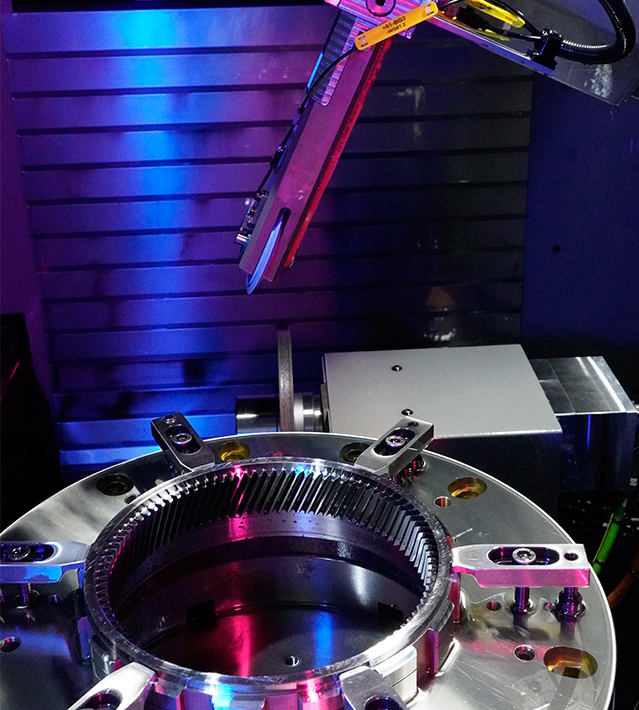In depth explanation looking up at U7 horizontally opposed engine
BYD's high-end brand "Looking Up" has always been a window of the company's technological strength. Previously, the rugged off-road oriented U8 successfully broke the norm with core technologies such as "turning in place", "emergency floating", and "Yunnian-P hydraulic suspension"; The U9, which is positioned as a supercar, achieved a remarkable feat of overcoming obstacles through the "Yunnian-X" technology, which has sparked widespread discussion on social media platforms.
The latest released U7 is positioned as a flagship sedan, mainly targeting the executive level car market. At this press conference, the U7 showcased multiple unique technologies, including a fully active suspension with a suspension motor direct drive, a plug-in hybrid engine with a horizontally opposed layout, and the "Easy Four Wheel" independent torque vectoring control technology. Looking up at the U7, there are many disruptive technologies integrated, such as a suspension motor direct drive fully active suspension, a horizontally opposed plug-in hybrid engine, and the "Easy Four Wheel" independent torque vectoring control system. Among them, the application of the horizontally opposed engine is particularly noteworthy.
This article will focus on this core highlight and delve into the horizontally opposed engine used in the U7. We will analyze in detail the innovative principles and practical applications of this design in reducing the engine center of gravity, optimizing the vehicle structure, and improving power performance, revealing its unique advantages in future automotive power systems.
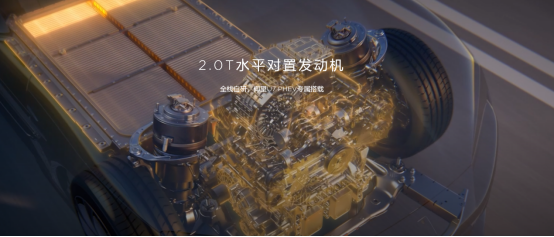
Looking up at the U7 plug-in hybrid version, it is equipped with a Chinese horizontally opposed engine with a height of only 42 centimeters, much lower than the inline engine. It is not only quiet and smooth, but also maximizes the use of the front cabin space. The noise of hybrid and pure electric operating conditions is controlled within 1 decibel.
1: The mainstream arrangement of engine cylinders
At present, there are three main arrangements of engine cylinders: inline engine, V-type engine, and horizontally opposed engine. The three differ in their arrangement.

As the name suggests, an inline engine is a system in which all cylinders are arranged in a row for reciprocating motion up and down. Generally, engines with less than 6 cylinders use this method, which is characterized by simple process, low manufacturing cost, and easy maintenance. It is the preferred choice for economy sedans, but there is significant vibration during engine operation. V-shaped engine, all cylinders are divided into two groups, similar to two inline engines combined at a certain angle. This layout can achieve smoother operation and effectively reduce vibration and noise. In fact, the angle between two sets of cylinders has a significant impact on the smoothness of the engine, and 90 ° is usually considered the best choice. However, due to the need to consider other factors during design, different angles such as 60 ° and 110 ° may also be used in actual production. A smaller angle helps to reduce the width of the engine, making it easier to install in narrow cabins, but this may increase the height of the engine; A larger angle can lower the center of gravity of the engine, thereby improving the stability of the vehicle when driving on curves. It should be noted that V-shaped engines are mainly used in mid to high end vehicle models due to their relatively complex structure and high manufacturing and maintenance costs. The engine is horizontally opposed, with cylinders symmetrically placed on both sides like hands spread out. The pistons on both sides move in opposite directions at the same time. Looking up, the U7 is equipped with this engine.
2: Advantages and disadvantages of horizontally opposed engines
Why are few car companies adopting horizontally opposed engines despite their obvious advantages? Let's first discuss his shortcomings.
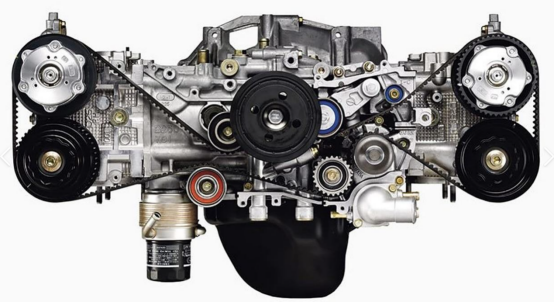
(1) High manufacturing costs: dual challenges of design complexity and process accuracy
Compared to inline engines with simple structures and relatively economical manufacturing, horizontally opposed engines face significantly higher technical barriers and cost pressures in both design and manufacturing processes.
Firstly, from the perspective of the valve system, horizontally opposed engines have their cylinders horizontally distributed on both sides of the crankshaft, and the combustion chambers are naturally divided into left and right ends. This structure determines that its valve system cannot drive all cylinders through a set of camshafts like an inline engine, and a complete valve drive mechanism must be designed and arranged separately for each side. Taking a four cylinder horizontally opposed engine as an example, the required components such as camshafts, valve rocker arms, and valve springs need to be "symmetrically paired", greatly increasing the number and complexity of components. This structural difference directly leads to a much higher overall system cost than an inline engine of equal displacement.
Secondly, in terms of cylinder structure, horizontally opposed engines typically adopt a "split" cylinder design to facilitate the assembly of the internal crankshaft, connecting rod, and piston assembly. This symmetrical joint cylinder structure, compared to the common integrated cylinder body of inline or V-shaped engines, not only requires higher machining accuracy, but also significantly increases the complexity and production cycle of the assembly process. Especially in terms of sealing control and structural rigidity assurance, more stringent requirements have been put forward for manufacturing processes.
From the perspective of comprehensive technical complexity and manufacturing cost, the approximate ranking of engine costs can be summarized as: horizontally opposed engine>V-shaped engine>inline engine. This also explains why although the horizontally opposed structure has unique advantages in center of gravity control and vibration suppression, it has always been adopted and mass-produced by only a few high-end brands. For mainstream automobile enterprises pursuing large-scale cost control and supply chain efficiency, behind the progressiveness technology, this structure is significantly higher than the industry average investment in development and manufacturing.
(2) The dilemma of spatial layout: the game between structural advantages and platform adaptability
The biggest advantage of a horizontally opposed engine in terms of structure is its "flattened" design. Due to the horizontal arrangement of cylinders, their overall height is significantly lower than that of inline or V-shaped engines, which helps to lower the center of gravity of the vehicle and save vertical space. However, this lateral extension design also brings obvious side effects - while saving height, it significantly increases the occupation of lateral space, posing a serious challenge to the overall layout of the vehicle.
In practical applications, due to the need for horizontally opposed engines to span across the left and right sides of the vehicle, their width inevitably encroaches on the spatial buffer zone between the engine compartment and the suspension system. This directly limits the choice of front and rear suspension forms. For example, the Subaru BRZ can only use a compact MacPherson suspension on the front axle; The rear axle of the Porsche 718 also chose the MacPherson solution instead of the multi link system, not out of compromise on handling, but due to the compression of the engine width on the rear cabin layout. If attempting to accommodate both horizontally opposed engines and complex multi link suspensions in a limited space, it will inevitably lead to an increase in vehicle width or redesign of the frame structure, which is difficult to achieve in mass production platforms.
An engineer once envisioned compressing the length of the front of the car and increasing the passenger compartment space by installing the horizontally opposed engine horizontally by rotating it 90 degrees. But practice has proven that this plan is difficult to achieve. Even after rotation, the "low and wide" lateral characteristics of the engine still occupy the front and rear cabin space, leading to complex arrangements of the intake, cooling, and exhaust systems. At the same time, the structural integration of the engine and gearbox will also be constrained, further increasing the difficulty of design and maintenance, which goes against the core demands of the front wheel drive platform for compactness and maintainability. Therefore, this arrangement has not achieved practical breakthroughs in the market.
(3) Explosive Concerns: Systematic Testing of Thermal Management and Structural Rigidity
In addition to manufacturing costs and space adaptation issues, horizontally opposed engines also face long-term engineering challenges in terms of thermal management and structural strength, especially under high load conditions, where the problem of "easy cylinder explosion" has become a focus of questioning.
The fundamental reason is that the combustion chamber of this type of engine is distributed on both sides, resulting in an asymmetric heat distribution. Especially under high load or long-term operating conditions, local overheating is prone to occur in the cylinder areas on both sides, while the temperature in the middle area is relatively low due to airflow interference and limited coolant distribution, forming a temperature gradient. This uneven thermal stress can easily lead to local fatigue and strength attenuation of the cylinder body, thereby inducing microcracks and even structural damage to the cylinder body.
On the other hand, horizontally opposed engines often adopt a split cylinder block structure, which reserves necessary installation clearance for assembling connecting rods and crankshaft components. Although this structural design is operable in manufacturing, it also means that precise assembly tolerances must be reserved on the mating surface. Even if the manufacturing accuracy is high enough, it is difficult to completely avoid the small displacement and stress concentration caused by centrifugal force and thermal expansion and contraction at the joint under long-term high-intensity operation, which exacerbates cylinder fatigue and increases the risk of structural failure.
In summary, although horizontally opposed engines perform well in low center of gravity, smoothness, and response speed, their high manufacturing costs, constraints on vehicle space, and potential reliability issues ultimately make it difficult for this technology to be widely applied in front wheel drive models. It is precisely these comprehensive factors that make only a few manufacturers like Subaru and Porsche still insist on using this engine form.
Here are the unique advantages of horizontally opposed engines:
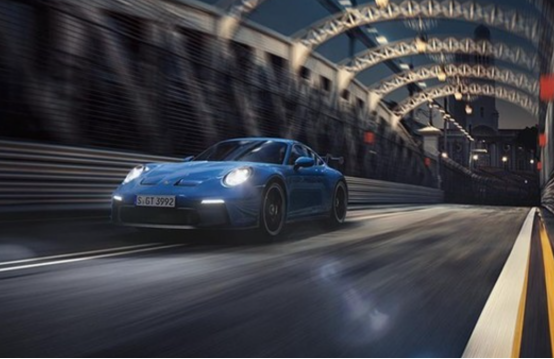
Among many engine architectures, the horizontal opposed engine (Boxer Engine) enjoys a high reputation among automotive engineers and performance enthusiasts for its excellent smoothness and dynamic response capabilities. Its unique structural concept not only effectively resolves the mechanical vibrations that are difficult to avoid in traditional engine operation, but also brings systematic improvements in vehicle handling, center of gravity layout, and driving experience.
The biggest highlight of a horizontally opposed engine is its natural mechanical balance characteristics. Due to the symmetrical lateral motion of the piston pairs, the inertial force from one side of the piston can be offset by the reverse motion of the other side of the piston, thereby significantly reducing the vibration generated by general engines at high speeds. This first-order and second-order force cancellation, which can be achieved without the need for an additional balance shaft, makes the engine run more smoothly and has significantly better NVH performance than inline or V-shaped structures of the same displacement.
In addition, the low and flat structure layout of the horizontally opposed engine allows it to be installed at a lower position in the entire vehicle, effectively reducing the center of gravity of the vehicle. A low center of gravity not only enhances the stability and response speed of the vehicle during turns, but also brings a driving experience similar to a mid engine layout, especially in extreme driving conditions such as high-speed lane changes and intense cornering. This structural characteristic is also an important technical basis for brands such as Porsche and Subaru to insist on using horizontally opposed engines.
From an engineering perspective, a horizontally opposed engine is a power architecture designed for handling, and its advantages cannot be fully reflected by paper parameters. It deeply integrates mechanical symmetry with the dynamic performance of the entire vehicle, bringing a more balanced and stable driving experience to users who pursue a pure sense of driving
Vibration source and cancellation principle
Engine vibration mainly comes from two aspects:
First order vibration: This is caused by the up and down movement of the piston. As long as the engine uses even numbered cylinders and synchronizes the opposite motion of the relative cylinders, it can effectively counteract this vibration. For example, inline four cylinder engines achieve this goal through pairwise pairing.
Second order vibration: This problem is more complex due to the acceleration difference caused by the asymmetry of the piston's movement distance within one stroke during the crankshaft rotation process. It is difficult to completely eliminate this vibration in inline engines due to the inherent imbalance in their structure.
In contrast, the horizontally opposed engine design is exquisite. The cylinders on both sides work in a completely synchronized manner. When the engine inhales, the cylinders on both sides move inward, and the acceleration is completely symmetrical, thus completely eliminating second-order vibration. The configuration of even numbered cylinders simultaneously solves the problem of first-order vibration, enabling the overall operation to achieve a smooth effect similar to that of an inline six cylinder or even V12 engine.
Center of gravity advantage and overall vehicle performance
In addition to addressing vibration issues, another major highlight of horizontally opposed engines is their extremely low center of gravity. Compared with the vertical layout of inline engines or the inclined arrangement of V-shaped engines, the cylinder lying flat design of horizontally opposed engines greatly reduces the overall center of gravity of the engine. The main benefits of this feature are:
Improved cornering performance: A low center of gravity reduces the vehicle's roll during turns, allowing the inner tires to better fit the road surface, thereby improving the vehicle's cornering speed and stability.
Optimization of interior space: The low engine structure creates more vertical space inside the cabin, making it easier to install turbo intercoolers, four-wheel drive systems, and even lower the hood design to improve driving visibility and passenger experience.
Crankshaft design and power response
Horizontal opposed engines also have significant advantages in crankshaft design. Due to the lateral distribution of cylinders, its crankshaft length is shorter than that of inline engines, which not only makes the crankshaft lighter in weight, but also reduces the moment of inertia. In addition, without the need for additional crankshaft counterweights, this self balancing characteristic reduces internal losses of the engine when the speed increases, thereby achieving faster power response.
In summary, the horizontally opposed engine effectively eliminates the first-order and second-order vibration problems that exist in traditional engines through its sophisticated cylinder layout and synchronous motion design; Meanwhile, the low center of gravity design and lightweight crankshaft further enhance the vehicle's handling and power response speed. This design concept that balances smoothness, handling, and space utilization makes the horizontally opposed engine an ideal choice for high-performance vehicles pursuing the ultimate driving experience.
3: Looking up at the horizontally opposed engine of U7
What is the technological value of China's first 2.0T horizontally opposed engine?
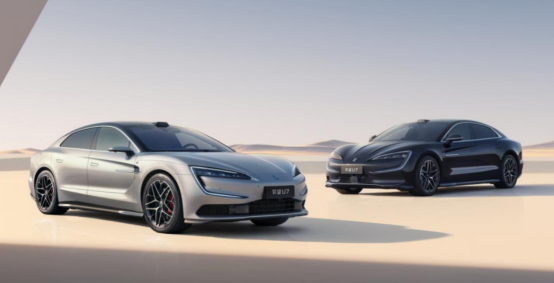
Against the backdrop of the integration of electrification and hybrid acceleration, BYD looks up to the U7's first 2.0T horizontally opposed engine in China, undoubtedly setting a new benchmark for the development of domestic powertrain technology. This engine not only achieves the ultimate compact design, but also takes into account multiple dimensions such as power performance, platform adaptability, and NVH control. It is a breakthrough practice of Chinese domestic brands in high difficulty engine architecture.
Traditional plug-in hybrid architectures typically rely on a larger front cabin space to accommodate longitudinal or transverse internal combustion engines and electric drive components. However, looking up at U7, in order to meet the integration requirements of its four motor independent drive system and Yunnian-Z electromagnetic suspension system, a more compact engine solution is urgently needed. The BYD engineering team ultimately adopted a horizontally opposed structure and compressed the overall height of the vehicle to only 420mm, which is 125mm lower than the same displacement engine of Porsche. This fully released the longitudinal and vertical space in the front cabin and successfully achieved a highly integrated vehicle platform layout.
Low center of gravity is one of the natural advantages of horizontally opposed engines. The lowering of the engine's center of gravity not only optimizes the overall weight distribution of the vehicle, but also significantly improves the vehicle's handling limits and stability. In dynamic scenarios such as high-speed driving, emergency lane changes, or high-speed bends, looking up at the U7 shows stronger body posture control and steering response, achieving a driving experience comparable to high-performance coupes, which is extremely rare in traditional plug-in hybrid models.
In terms of functional expansion, this 2.0T horizontally opposed engine also has significant "performance complexity". It can not only serve as a range extender to provide continuous electrical support for battery systems, but also directly drive the rear axle under specific operating conditions, achieving deep coupling between fuel power and electric drive systems. The maximum output power of the entire power system is 272 horsepower, with a peak torque of 380 Newton meters, balancing high energy consumption and strong power. It endows the U7 with full acceleration performance and excellent energy consumption level, fully meeting the needs of high-performance hybrid users.
At the NVH level, the horizontally opposed structure achieves a certain degree of self vibration cancellation through symmetrically arranged piston movements. Looking up at the engine installed on U7, its noise level is only 1 decibel higher than that of the motor under idle and low to medium load operating conditions, which can be almost ignored. In addition, BYD's mature vehicle acoustic package design enables the vehicle to achieve luxury level quietness performance in different driving modes, greatly improving driving comfort.
More importantly, the mass production of this engine reflects BYD's comprehensive control over multiple core areas such as precision manufacturing, thermal management, and crankshaft system balance design. Horizontal opposed engines are considered one of the "ceilings" in powertrain technology due to their complex structure and strict manufacturing tolerance requirements. BYD's successful localization of research and mass production not only breaks the technical barriers of foreign brands in this architecture field, but also fully demonstrates its independent research and development strength in the high-end power technology chain.
From architectural breakthroughs to vehicle matching, from static structure to dynamic performance, this 2.0T horizontally opposed engine not only fills China's technological gap in this field, but also demonstrates BYD's forward-looking thinking and system capabilities in the integration of new energy and hybrid systems. Its significance lies not only in being the "first product", but also in being the "benchmark".
Note: The data and images cited in the article are sourced from the internet


